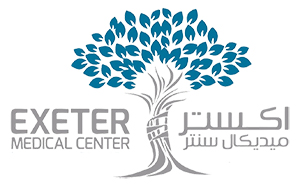Congenital Hand Deformities
Congenital hand deformities are deformities of the hand or any part of hand that are present at birth. These deformities can be particularly disabling as the hands are important for the child for its interaction. Congenital hand deformities may be as simple as digital disproportion or may be the complete absence of a bone. Congenital deformities may be developed because of injury, diseases conditions or may be present during birth because of any abnormalities during the growth in womb. It should be treated at an early stage before the problem becomes severe.
Types of Congenital hand deformities
Type I- Failure of digit formation
These deformities occur due to problems occurring during development of baby in the womb.
- Radial and Ulnar ClubHand Deformity: This type of deformity involves all the tissues resulting in a short thumb, or complete absence of the thumb, and underdeveloped muscles and ulnar bone.
- Thalidomide related deformity of limbs: Thalidomide is a drug used for morning sickness in pregnant women which is currently banned for use because of its teratogenic effects i.e. severe birth defects in children such as incomplete or abnormal development of upper and lower limbs.
Type II- Failure of differentiation
In this type of deformity the soft tissues or the bones of the fingers fail to separate. These types of deformities require surgical correction, and usually surgery is not recommended until the second year of life.
- Syndactyly: It is the most common deformity in which two or more fingers are fused together. Simple syndactyly involves fusion of only the soft tissues of fingers whereas complex syndactyly involves fusion of both soft tissues and bones of the fingers.
- Contractures: Contractures may result by improper differentiation of cells which may cause abnormal pulling of the digits as in congenital trigger thumb where the child may not be able to extend the thumb straight.
Type III- Duplication
Duplication is the abnormality where a child will have extra digits in the hand. The condition is called polydactyly and in many cases the extra digit would be the little finger.
Type IV- Overgrowth
Overgrowth or macrodactyly is the excessive growth of a digit causing abnormally large digit. Macrodactyly is a rare condition and most commonly affects the index finger. Surgery is complex and may have poor outcomes. Amputation may be recommended in many cases.
Type V- Undergrowth
Undergrowth or brachydactyly is the condition of underdevelopment of fingers or thumbs and may present with small digit which may be because of missing muscles, underdeveloped or missing bones, and complete absence of a digit. Surgery may not be recommended in all individuals.
Type VI-Constriction ring syndrome
The abnormality occurs because of a constricting band of tissue around a finger or arm that interrupts the blood flow to the digit and the normal growth of the tissues. Constriction ring syndrome is often associated with other congenital abnormalities such as clubfoot, cleft lip, cleft palate, or other craniofacial anomalies.
Type VII- Generalized abnormalities and syndromes
These types of deformities are acquired and may occur due to injury or disease.
Diagnosis
Your pediatric orthopedic doctor performs physical examination to determine child’s hand conditions. X-rays may be required to see if there is any fracture or to check the condition of joint surface.
Treatment
Your doctor may suggest the following treatments based on your child’s age, health conditions, cause of the condition, and tolerance to specific medications, procedures, or therapies. Early correction of the deformities allows for normal development and function of hand and prevents the development of permanent deformities.
Some of the treatment options include:
- Limb manipulation and stretching is done to increase the movement of a restricted area to bring back the normal motion by eliminating pain and other symptoms.
- Skin grafting, a procedure in which part of hand that has a missing skin is attached or replaced with skin that is either removed from different part of the own body.
- Use of prosthetics, an artificial device that replaces the missing bone in hand
- Splinting of the affected limbs
- Physical therapy is recommended to help increase the strength and function of the hand
- Various surgeries are performed to correct the abnormalities including reduction and fixation of broken bone, drainage and debridement, micro-surgical replantation, skin flap, tendon and nerve repairs, arthroplasty, and fasciotomy.



